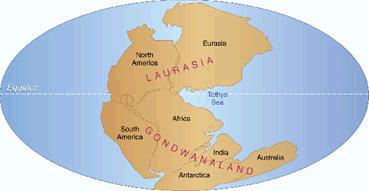|
|  |
| The 11th Planet |

|
To understand where and how the 11th planet came to be where it is today, you first need a basic understanding about the 10th planet. A good place to start is with the Sumerian texts. The Sumerians describe there being 11 planets in are solar system including the sun making a total of 12.
When the Sumerian tablets are brought up in concern of, or about the tenth planet, the fact that there are 11 planets and the sun is dismissed as the sun, and our moon being included as one of the planets, therefore only leaving the tenth planet in question.
However, there are some Sumerian texts, which clearly show the sun, and 11 planets, and their moons. So, I have a hard time accepting that these people, (the Sumerians) were so smart, or had such great knowledge, as to know of all these planets in our solar system, but at the same time were so stupid that they counted our moon as both a planet, and then counted it again as a moon, thereby counting it twice.
In determining whether an object would be considered a planet, or a moon, has nothing to do with its size. There or many moons that are bigger then planets. For example, Jupiter's moon Ganymede, is bigger then the planet Mercury. Jupiter's moons Ganymede, Callisto, Io, Europa, Saturn's moon Titan, Neptune's moon Triton, and even Earths moon, are all bigger then Pluto. What determents an object to be a planet, or a moon, is if the celestial body is in orbit around the sun, then it is a planet. However, if the celestial body is in orbit around another object, that is already in orbit around the sun, then it is a moon.
Surely the Sumerians knew this simple fact.
After researching further on this subject, why our moon is counted as one of the planets. Can more clearly be understood.
|
 |
|
The explanation starts a long time ago when this 10th planet, a brown dwarf, came through the inner solar system.
This brown dwarf had at least eight moons following it, one of these moons was a large watery moon. When this brown dwarf passed near an existing planet, this watery moon collided with this other planet, breaking it into a million pieces. This area in space is now known as the asteroid belt. Meanwhile, the largest piece of this watery moon, dramatically slowdown by the collision, still tried to follow its mother, the brown dwarf, as it made its rotation around the sun. However, once the gap was large enough that the brown dwarf, or 10th planet was now on the other side of the sun, the sun's influence took over and this large piece of the watery moon was left behind while its parent planet continued on without it.
This watery moon had now fallen from the place of its creation to become one of the known planets. As the water filled in the gaps left from the collision, most of the land mass that was then exposed, on this watery new world, was on one side of the planet.
Of course the name that we today use, or have given to this planet is earth. That's right, earth is the 11th planet. Earth, having been originally created as a moon, was the 11th celestial body to become a planet, and if you know and understand this, the statement that our moon, (meaning the moon that we are standing on) is counted as one of the planets, now makes complete and total sense. There is also now no conflict with counting the moon twice. Because our moon (Earth) is counted once as a planet, and Earth's moon is counted as a moon.
Let's look further at the evidence that supports this theory, shall we. In addition, if Earth is the 11th member of this solar system, that still does not tell us where this other celestial body or member of our solar system is located, or does it?
|
 |
|
|
|  |
|
All of the land mass on one side of the planet!
| pangaea |

|
|
 |
|
|
|
|
|
|  |

